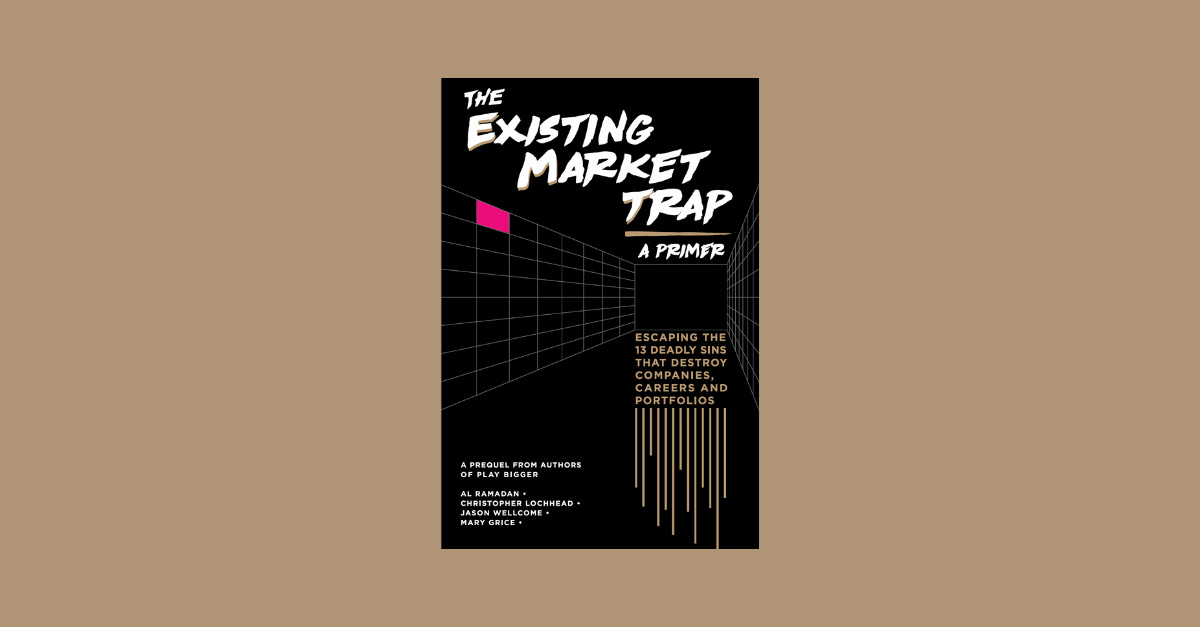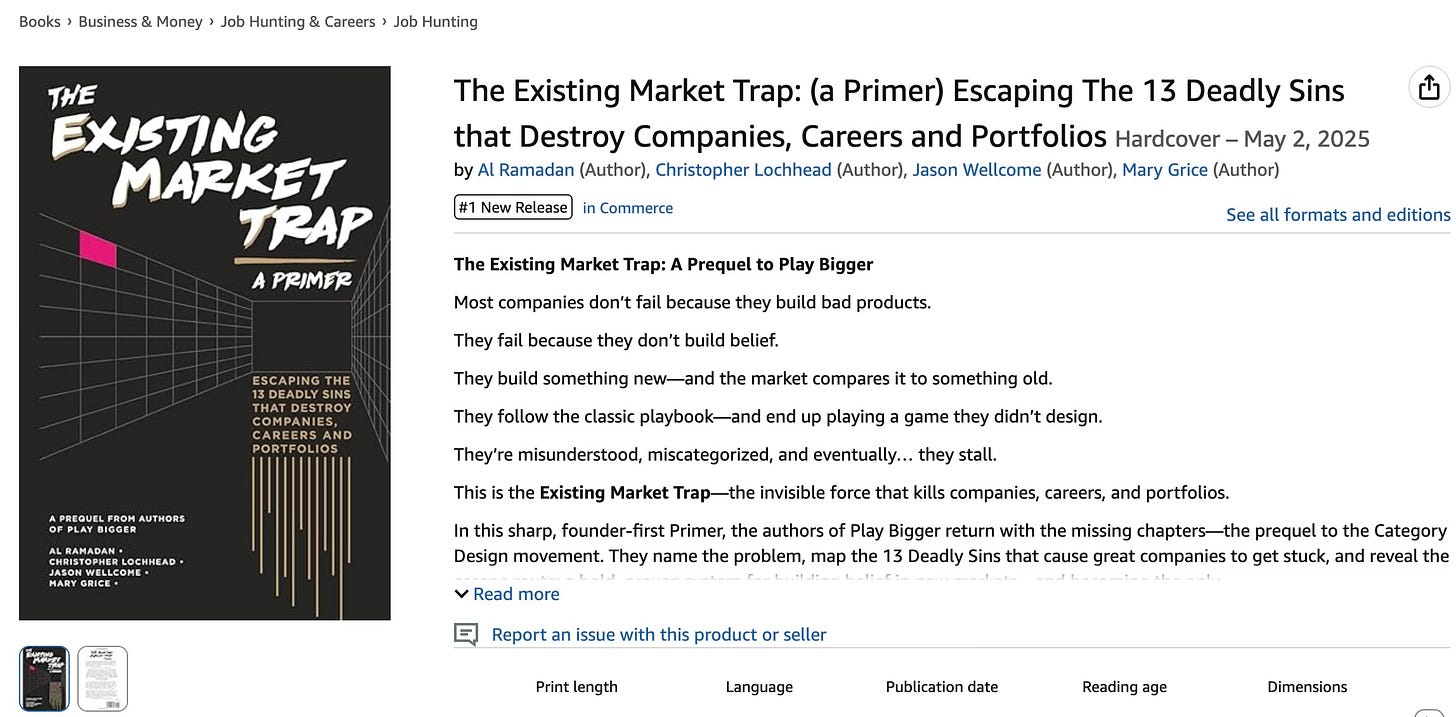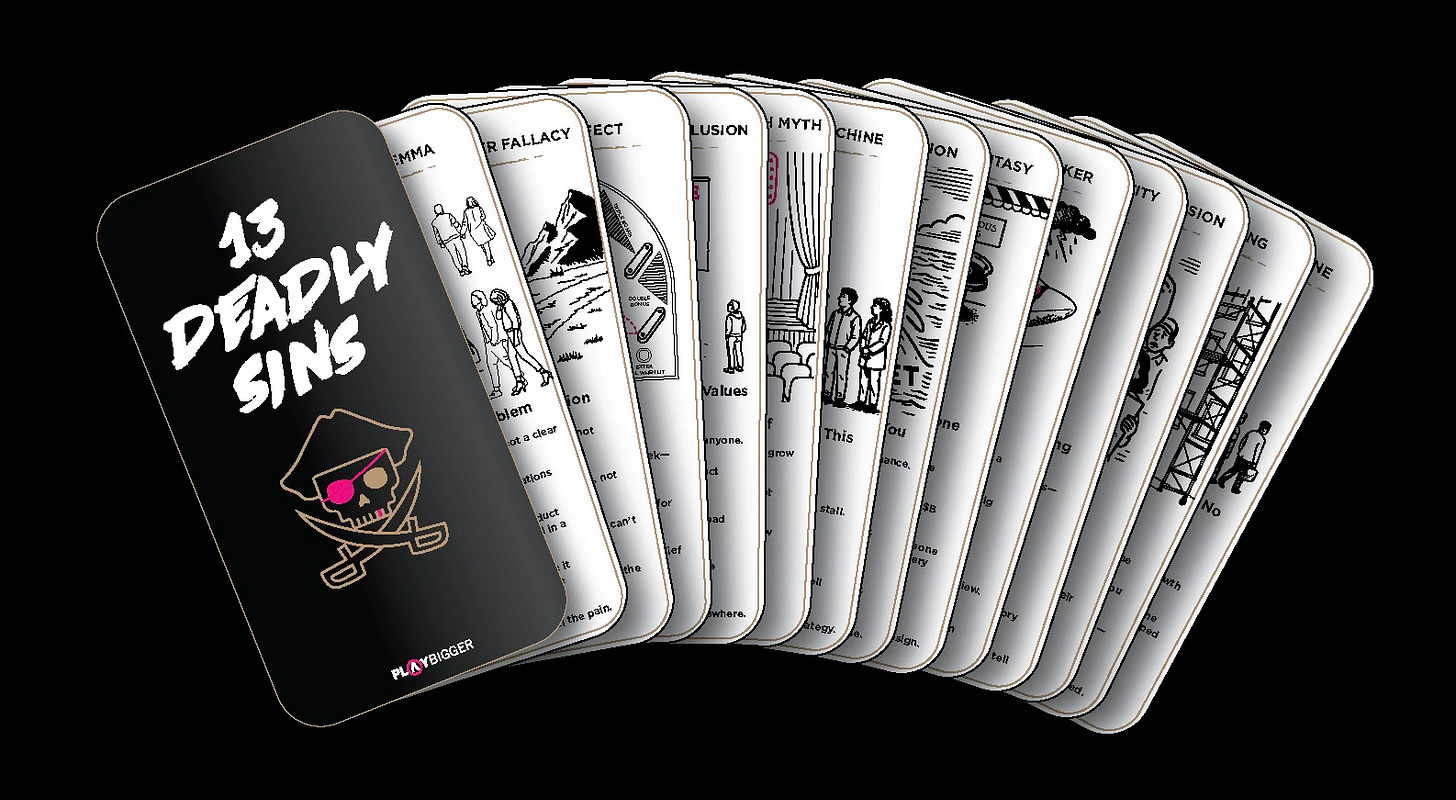The Engineer’s Dilemma
Are you solution looking for a problem?
Arrrrr! 🏴☠️ Welcome to a special free edition of Category Pirates. This is an excerpt from our new #1 bestseller “The Existing Market Trap”. For weekly category design insights, join 35,000+ radically "different” thinkers and subscribe.
Are you solution looking for a problem?
You’ve built something brilliant.
Technically elegant. Architecturally sound.
Your team is proud. The demo is slick. The use cases are endless.
And yet… no one cares.
| You’re not failing.
| You’re just invisible.
You’re leading with the solution instead of the problem.
You’re building features instead of belief.
The market doesn’t reward elegance.
It rewards urgency.
And urgency starts with belief.
Key Signal
| You’re pitching to users, not decision-makers
| Prospects say “cool tech”—but don’t act
| Investors ask for a simpler story
| Your sales team keeps asking for “a better way to explain it”
| People treat you like a vitamin, not an aspirin
What It Means
| You’re assuming great tech wins market share.
| But in a noisy world, new features don’t sell—new problems do.
What’s Really Going Wrong
| You’re overly focused on the product.
| You’re not anchoring it in a problem the market can feel.
| You haven’t built belief.
Without a Point of View, even the best tech gets dropped into the wrong bucket—or ignored entirely.
The Escape
| Start with the pain.
| Frame the problem so clearly that the solution becomes obvious—and inevitable.
| Name the villain.
Don’t just build something amazing.
Build the story that makes it matter.
ClearMetal: The Company That Escaped: Twice
Three Stanford founders. One garage.
A bold idea at the intersection of machine learning and global trade.
ClearMetal (originally called Tilikin) set out to predict where freight was and when it would arrive.
They had the talent. The funding. A technically sophisticated platform.
But no one knew what to call them.
“Are you a visibility tool?”
“Like Flexport?”
“A dashboard for logistics?”
They weren’t.
But they hadn’t yet built the belief to say what they really were.
Naming the Problem: The Now Economy Gap
When we started working with ClearMetal, the product was real.
But the category wasn’t.
They were using advanced ML to predict shipment arrivals, identify bottlenecks, and re-optimize supply flows. But no one could feel the pain.
After weeks of field interviews, a new pattern emerged:
| Global commerce had changed.
| Amazon had reset expectations.
| “On time” now meant “real time.”
The problem?
Shipping infrastructure hadn’t kept up.
The systems couldn’t tell you what happened today—let alone predict tomorrow.
We named the villain: The Now Economy Gap
And the problem: outdated IT in the age of Amazon.
It wasn’t just a logistics issue.
It was a systemic economic threat.
Defining the Category: Predictive Logistics
With the problem and villain in place, we worked with the team to define the new category:
Predictive Logistics.
It wasn’t about where a shipment was.
It was about where it would be—and what to do about it.
The POV was simple:
“You can’t win in the Now Economy using yesterday’s systems.”
ClearMetal wasn’t a control tower or a BI tool.
It was a learning platform for global freight.
And that distinction gave them gravity.
The Lightning Strike: Long Beach, California
We launched the category at a Lightning Strike in Long Beach—one of the busiest shipping hubs in the U.S.
The event brought together execs from ports, forwarders, carriers, and brands.
We walked through the Now Economy Gap and positioned Predictive Logistics as the solution.
| “Legacy logistics shows you what happened yesterday.
| Predictive Logistics tells you what happens tomorrow.”
It landed.
The press picked it up.
Analysts wanted briefings.
And for the first time—strategic buyers understood what ClearMetal actually was.
Belief showed up.
The Pivot: From Carriers to Brands
A few years later, ClearMetal realized their best customers weren’t carriers.
They were retailers.
Retailers didn’t just want to track freight.
They wanted to manage customer expectations.
And that shifted everything.
The product didn’t change—but the problem did.
The buyer changed.
So the category had to change, too.
Evolving the POV: Continuous Delivery Experience (CDX)
In 2020, ClearMetal launched a new category:
Continuous Delivery Experience (CDX).
The new POV said:
| “Fulfillment is the new front line of customer experience.”
Retailers didn’t just want visibility—they wanted predictability.
They wanted to know what was coming, when, and how it would impact promises made to customers.
CDX reframed logistics as an experience layer for modern brands.
And ClearMetal made the leap.
The Outcome: Acquisition by Project44
In 2021, ClearMetal was acquired by Project44.
“What we gain from ClearMetal is a holistic platform,” said Project44’s Duboe.
“They have large customers with advanced use cases… we can now move upstream.”
ClearMetal didn’t just escape the Engineer’s Dilemma.
They evolved their POV—twice.
And proved that great companies don’t just build.
They build belief.
The Escape Plan
| Start with the pain – Lead with the problem, not the product.
| Name the villain – Make the source of the pain visible.
| Define the user – Design for someone, not everyone.
| Design the category – Lead the new game, don’t play the old one.
| Light the fuse – Launch with force. Make the market feel it.
Category Design POV
You can’t convert people who don’t feel the pain.
Until you name the problem, you’ll stay misunderstood.
Until you name the villain, you’ll stay miscategorized.
Until you claim the category, you’ll stay invisible.
Build belief first.
Then build everything else.
🏴☠️
This is an expert from our new #1 Bestseller “The Existing Market Trap”
You can pick it up on Amazon now.
Bet you’ve done dumber things with $20.
“The Existing Market Trap: 13 Deadly Sins that Destroy Companies, Careers and Portfolios”





